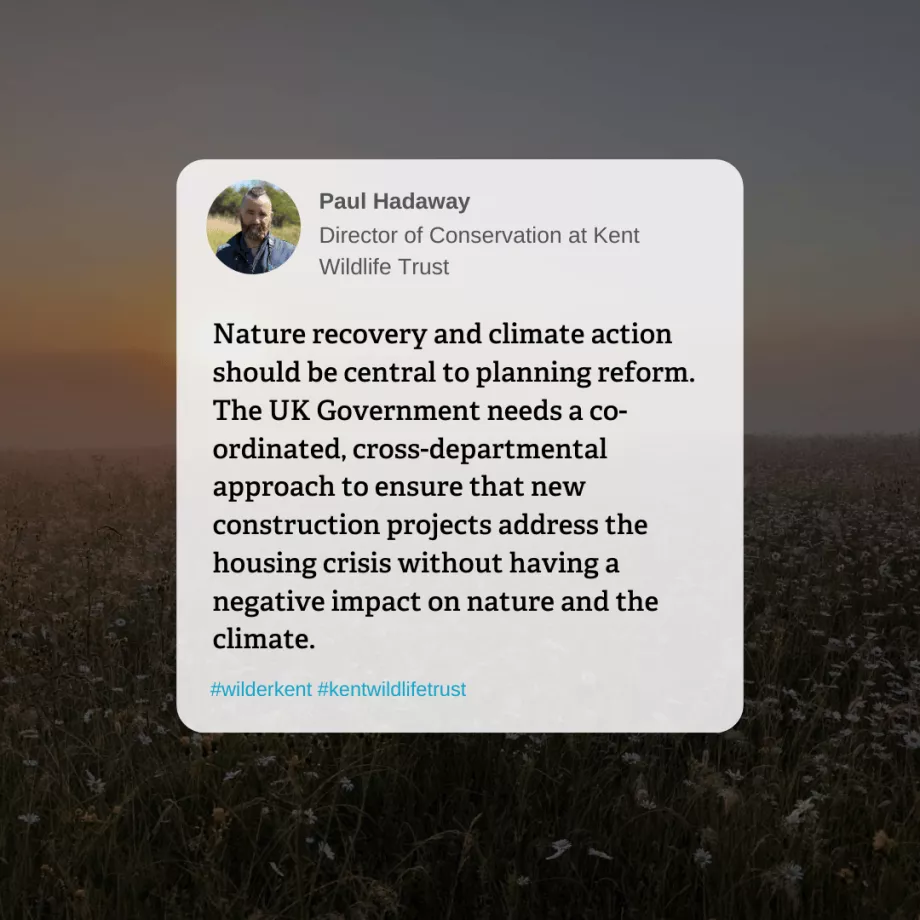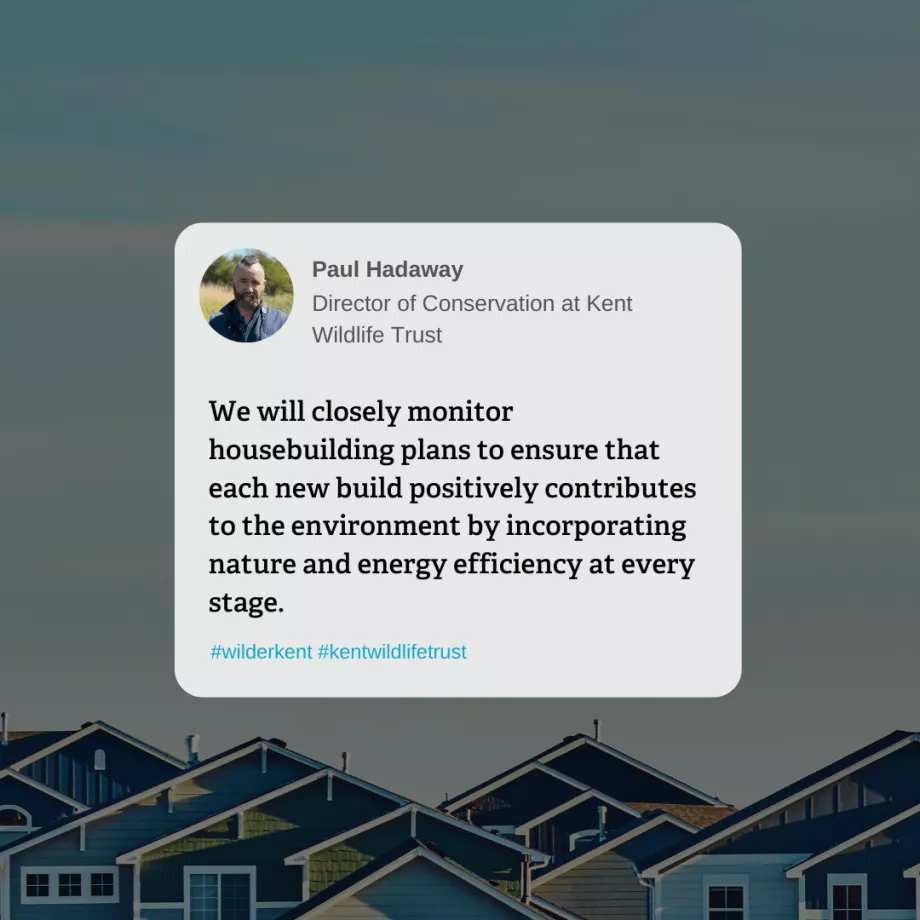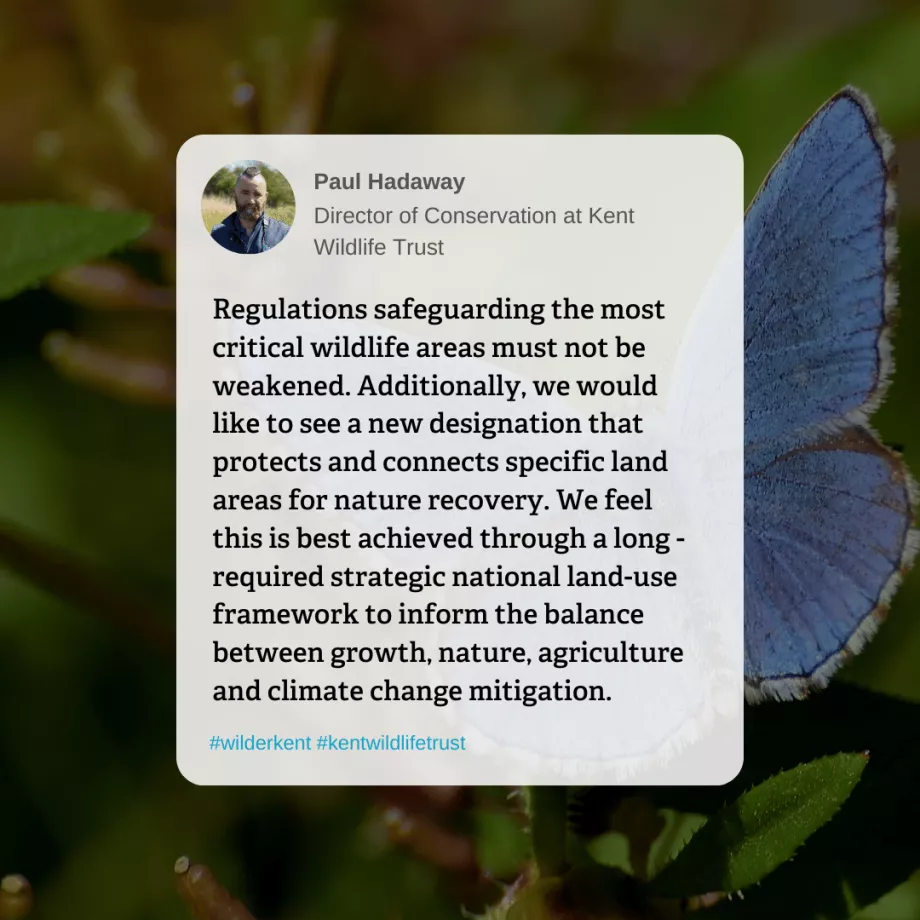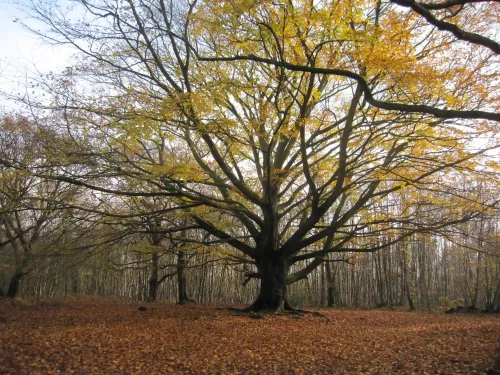
10 must-visit Kent woodlands
Be sure to check out these 10 woods whilst exploring Kent, each offering something a little different across the county.


The number of new homes built is a key measure of success in the planning system. In their manifesto, Labour committed to creating 1.5 million homes over the course of the next Parliament; on average this means building 300,000 homes per year (a similar target to that of the previous government).
But the number of homes being built overall shouldn’t be the only figure used to measure success.
Affordable homes – in particular social housing3 - makes up a significant proportion of the housing needs across England, and therefore should be the focus point for delivery. New housing also needs to be energy and water efficient; well connected to public transport; provide access to green and blue infrastructure; and deliver Biodiversity Net Gain (a requirement on developers to deliver more for nature than they are taking away). The planning system must be improved to deliver all this – and the metrics measuring success, to capture these points. Only by doing this can new housing help tackle the nature and climate crises and support the health and well-being of communities.

To deliver new homes, Labour has also committed to reviewing the Green Belt and allow development on ‘Grey Belt’.
Green Belts are areas of land that have been protected from development to stop the expansion of towns and cities, protect the character of areas near them and promote urban regeneration. While there are nature sites in the Green Belt, Green Belts are not protected for nature. With investment, Green Belt provides an opportunity to contribute to nature’s recovery and improve access to nature for the urban areas it surrounds.
Any land released from the Green Belt should be done via strategic planning and retain and improve green infrastructure, creating high quality, nature-rich developments. So called Grey Belt – brownfield land or scrubby habitats in the Green Belt - should only be released for development where they are not of high environmental value.

Ultimately, the UK Government needs a Land Use Framework that strategically sets out how land is used across the nation to help them meet their legally binding targets and international commitments on climate change and nature recovery, whilst ensuring that society has the food, housing, business, transport, energy and water it needs. Tackling the climate, nature, health and housing crises means thinking ahead about how land is used. We cannot afford to solve one crisis at the expense of another.
To build 1.5 million new homes in a nature and climate-friendly way, The Wildlife Trusts recommend the UK Government:
Finally, it’s impossible to talk about planning without recognising the need for well-resourced local planning authorities and statutory nature conservation bodies (including Natural England). Ensuring we can bring ecological expertise and monitor and enforce decisions, are all important to securing the best outcomes for nature, climate and communities.
We know we need to act, and quickly. The early decisions made by the new UK Government will set the tone for changes to come. By ensuring nature is protected and given the opportunity to recover through the planning system, Government can ensure the planning system delivers for nature and for communities.
Sign up to our Speak Up for Nature mailing list to get the latest updates, as well as insight into actions you can take for nature in Kent.

Be sure to check out these 10 woods whilst exploring Kent, each offering something a little different across the county.

Natasha Ruskin explores something terrifying: a world without woodlands.

Volunteer Matt Huggins explores some of the lesser-known but still fascinating animals that grace our woodlands.